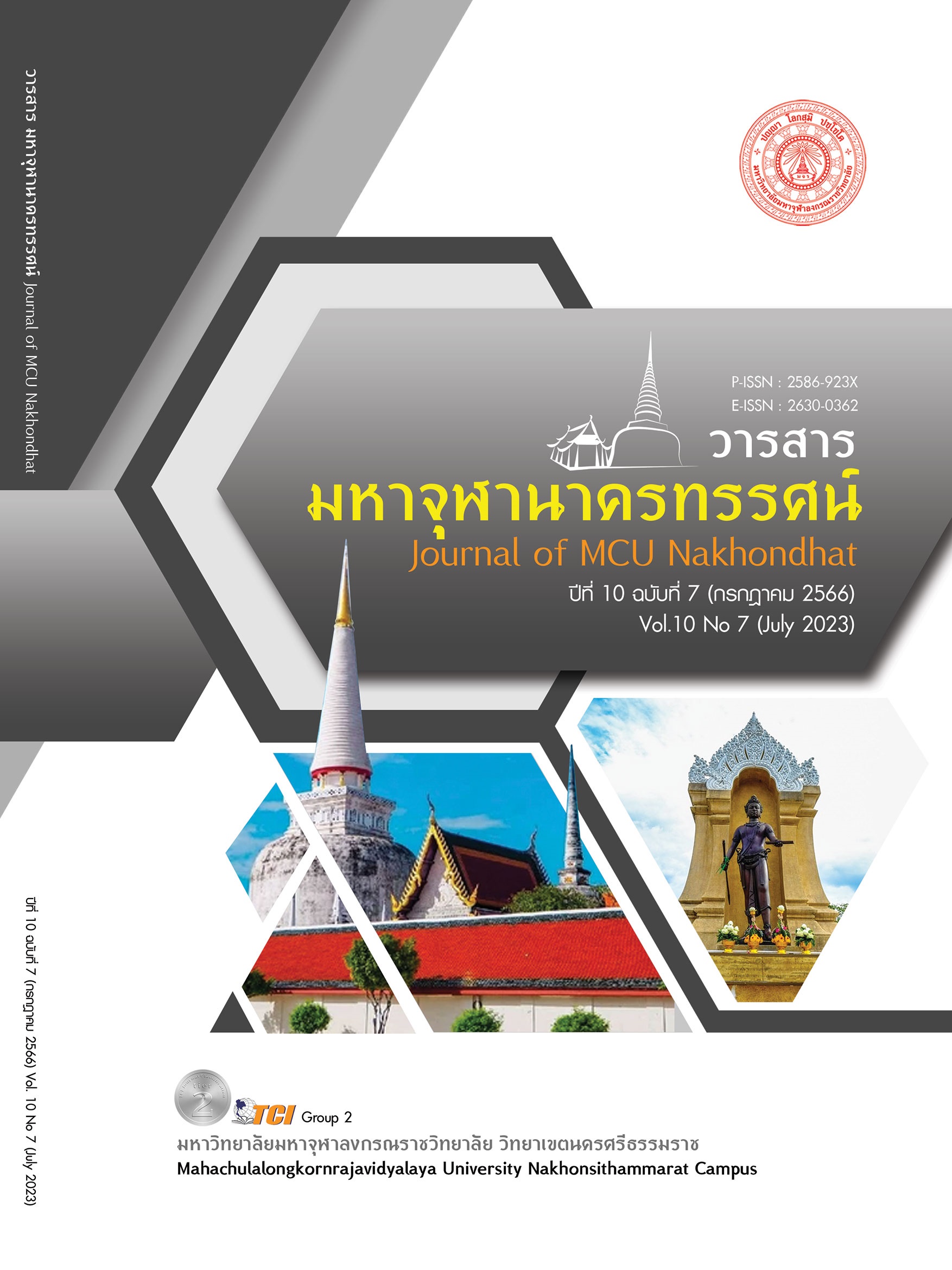DEVELOPMENT OF ACTIVE LEARNING AND PROJECT – BASE LEARNING INSTRUCTIONAL MODEL BASED ON BLENDED APPROACH TO ENHANCE COMPRETENCIES IN EDUCATIONAL INFORMATION TECHNOLOGY AND INNOVATION FOR PRE-SERVICE TEACHER OF RAJABHAT UNIVERSITY
Main Article Content
Abstract
The purposes of this research were 1) to create and evaluate the quality of an active learning and project-based learning instructional model based on blended approach to enhance the competencies on educational innovation and information technology for pre-service teacher of Rajabhat University, 2) to try out the proposed instructional model, and 3) to evaluate the achievement of the proposed instructional model. The samples used for this research were 35 students of the third-year bachelor degree of education in childhood education major, faculty of Education, Nakhon Sawan Rajabhat University. Research findings were as follows: 1) an instructional model for enhancing the competencies on educational innovation and information technology for pre-service teacher of Rajabhat University consisted of four components: input, process, output and feedback. Five steps of process are researching, problem statement, brainstorming, observation, and synthesizing/ reflecting. These steps were inserted as the activities of the active learning and problem-based learning into both normal classroom (Face-to-Face Learning) and online classroom (Online Learning). Learners’ learning post-test achievements were higher than the pre-test achievements with statistical significance at .05. Overall mean score of the 1st competency, the ability to choose apply and evaluate media, innovation and Information Technology for learning, equaled 79.68%, a very good level. The 2nd competency was ability to use Information Technology for communication. Its overall mean score equaled 88.38%, a good level. Finally, The total mean score for learners’ opinion at the most level (Mean = 4.56, S.D. = 0.61). By the evaluation of five experts, this model was suitable for enhancing the competencies at the most level (Mean = 4.52, S.D.=0.51)
Article Details

This work is licensed under a Creative Commons Attribution-NonCommercial-NoDerivatives 4.0 International License.
References
เนาวนิตย์ สงคราม. (2550). การพัฒนารูปแบบการสร้างความรู้ด้วยการเรียนรู้จากการปฏิบัติและการเรียนรู้ ร่วมกันสำหรับบุคลากรในสถาบันอุดมศึกษา: กรณีศึกษา คณะครุศาสตร์ จุฬาลงกรณ์มหาวิทยาลัย. ใน วิทยานิพนธ์ปริญญาดุษฎีบัณฑิต สาขาเทคโนโลยีและสื่อสารการศึกษา. จุฬาลงกรณ์มหาวิทยาลัย.
เนาวนิตย์ สงคราม. (2555). ผลของการจัดการเรียนรู้ตามแนวคิดการเรียนรู้เชิงรุกและแนวคิดการเรียนการสอนบนเว็บแบบผสมผสานเพื่อการออกแบบการศึกษานอกสถานที่เสมือนและส่งเสริมความคิดสร้างสรรค์ของนักศึกษาครุศาสตร์ศึกษาศาสตร์ระดับปริญญาบัณฑิต. วารสารศึกษาศาสตร์ มหาวิทยาลัยศิลปากร, 10(2), 82-95.
เมธี คชาไพร. (2558). การพัฒนารูปแบบการเรียนการสอนแบบผสมผสานเพื่อเสริมสร้างความรู้และสมรรถนะด้านนวัตกรรมและเทคโนโลยีสารสนเทศทางการศึกษา สำหรับนิสิตหลักสูตรการศึกษาบัณฑิตมหาวิทยาลัยศรีนครินทรวิโรฒ. ใน ดุษฎีนิพนธ์การศึกษาศาสตร์ดุษฎีบัณฑิต สาขาเทคโนโลยีการศึกษา. มหาวิทยาลัยศรีนครินทรวิโรฒ.
ใจทิพย์ ณ สงขลา. (2542). การสอนผ่านเครือข่ายเวิลด์ ไวด์ เว็บ. วารสารครุศาสตร์, 27(3), 18-28.
ไพฑูรย์ กานต์ธัญลักษณ์. (2557). การพัฒนารูปแบบการเรียนการสอนแบบผสมผสานด้วยการเรียนแก้ปัญหาร่วมกันและเทคนิค ซินเนคติกส์เพื่อส่งเสริมความสามารถในการแก้ปัญหาเชิงสร้างสรรค์ของนักศึกษาครู. ใน ดุษฎีนิพนธ์บัณฑิต สาขาวิชาหลักสูตรและการสอน. มหาวิทยาลัยศิลปากร.
คณะกรรมการคุรุสภา. (2556). สาระความรู้ สมรรถนะและประสบการณ์วิชาชีพของผู้ประกอบ วิชาชีพครู ผู้บริหารสถานศึกษา ผู้บริหารการศึกษา และศึกษานิเทศก์ ตามข้อบังคับคุรุสภา ว่าด้วยมาตรฐานวิชาชีพ. เรียกใช้เมื่อ 9 มกราคม 2561 จาก https://shorturl.asia/lvEpJ
จันทรา แซ่ลิ่ว. (2560). การจัดการเรียนรู้แบบเชิงรุก (Active learning) ในรายวิชาการพัฒนาทักษะการคิดสำหรับเด็กปฐมวัย. ใน รายงานการวิจัย. มหาวิทยาลัยราชภัฏเชียงใหม่.
จิรภา อรรถพร. (2557). พัฒนารูปแบบการสอนเชิงรุกออนไลน์เพื่อส่งเสริมพฤติกรรมการเรียนรู้ของนิสิตปริญญาบัณฑิต. วารสารอิเล็กทรอนิกส์ทางการศึกษา, 9(4), 122-136.
จุราภรณ์ ปฐมวงษ์. (2565). การพัฒนารูปแบบการเรียนรู้เชิงรุก (Active Learning) เพื่อส่งเสริมทักษะการพูดสนทนาภาษาอังกฤษ สำหรับนักเรียนชั้นมัธยมศึกษาปีที่. Journal of Modern Learning Development, 7(4), 143-159.
ทิศนา แขมมณี. (2560). ศาสตร์การสอน : องค์ความรู้เพื่อการจัดกระบวนการเรียนรู้ที่ประสิทธิภาพ. (พิมพ์ครั้งที่ 21). กรุงเทพมหานคร: สำนักพิมพ์แห่งจุฬาลงกรณ์มหาวิทยาลัย.
บุหงา วัฒนะ. (2546). Active Learning. วารสารวิชาการ, 6(9), 30-34.
วิวัฒน์ มีสุวรรณ์. (2551). การพัฒนารูปแบบการเรียนผ่านเครือข่ายไร้สายบนเครื่องช่วยงานส่วนบุคคลแบบดิจิทัล (PDA). ใน ดุษฎีนิพนธ์การศึกษาศาสตร์ดุษฎีบัณฑิต สาขาเทคโนโลยีการศึกษา. มหาวิทยาลัยศรีนครินทรวิโรฒ.
สุวิทย์ มูลคํา และอรทัย มูลคํา. (2545). 21 วิธีจัดการเรียนรู้: เพื่อพัฒนากระบวนการคิด. กรุงเทพมหานคร: ภาพพิมพ์.
Al-Balushi, S. M., & Al-Aamri, S. S. (2014). The effect of environmental science projects on students’ environmental knowledge and science attitudes. International Research in Geographical and Environmental Education, 23(3), 213-227.
Bonwell, C. C., & Eison, J. A. (1991). Active Learning: Creating Excitement in the Classroom. Washington, DC: George Washington University.
Driscoll, M. (2002). Web-Based Training: Creating e-Learning Experiences. 2 nd.ed. San Francisco: Jossey-Bass Pfeiffer.
Fink, L. D. (2003). Creating significant learning experiences: An integrated approach to designing college courses. Jossey-Bass: San Francisco.
Hazzan, O., Lapidot, T., & Ragonis, N. (2004). Guide to Teaching Computer Science: And Activity Based Approach. New York: Springer.
Meyers, C. & Jone, T. B. (1993). Promoting active Learning: Strategies for the college classroom. San Francisco: Jossey-Bass.
Sweller, J. (2006). The worked example effect and human cognition: Learning and Instruction. New Jersey: Educational Technologies.


